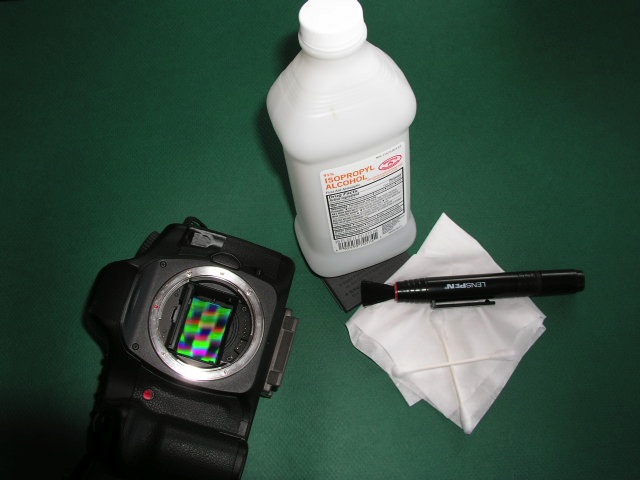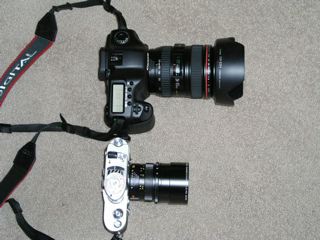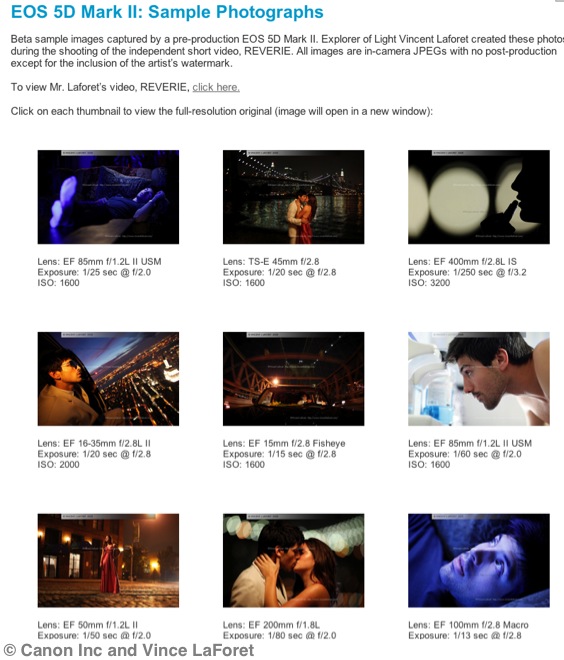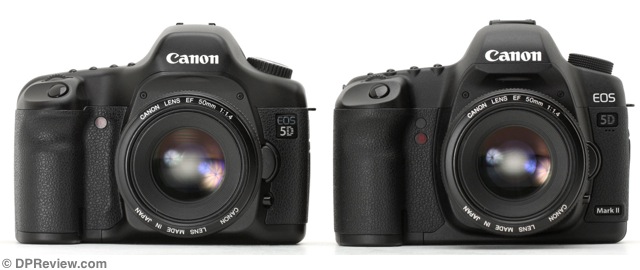Don’t be ripped off.
It’s no great secret that the sensors in earlier DSLRs can get awfully dirty, the resulting blobs of black on your image testifying to the need for lots of retouching. Just like in the film days when you received your precious emulsion back from the processing place only to find that they had a party during which they stomped on your images with hobnailed boots.
So those of us not blessed with the latest in sensor dust removal technologies (meaning 5D Mark I and like vintage camera users) have to subject their camera to a nervy-dervy sensor cleaning to get the muck off and obviate the retouching. In the Canon 5D the sensior is protected by a sheet of quartz crystal – both hard and dust attracting. Now you can play into the hands of those marketers selling you Genuine Sensor Cleaning Kits for hundreds of dollars and what do you get?

A fool and his money are easily parted.
Why, a brush with some mumbo jumbo about how it’s grease free and assembled by Chinese virgins, and a bottle of isopropyl alcohol. Enough for ten cleanings.
Well, let me introduce you to Dr.Pindelski’s $15 DIY Economy Sensor Cleaning Kit. Enough for 10,000 cleanings.

The Dr. Pindelski $15 Sensor Cleaning Kit. The moiré pattern on the sensor is caused by the point-and-shoot used to take this.
Start with a Pearstone brush for $10, add a bottle of 91% Isopropyl Alcohol (you want the most concentrated, to avoid water deposits) and some Q tips from the bathroom – the genuine soft ones, not the hard generics. Do not use Kodak Lens Cleaner – this is a very poorly thought out product and is guaranteed to leave water stains on your sensor and those will be clearly visible, and near impossible to retouch, in your images.
Go outside, take a snap of the sky at a small aperture (set the camera to manual focus if the shutter refuses to fire) and load your CF or SD card into Lightroom. Increase contrast to the maximum and all the dirt blobs and deposits will show up clearly. Remember that what you see at the top right of the picture indicates dust at the lower left of the sensor and so on, as the image on the sensor is flipped and reversed once it has passed through the lens.
Now moisten a Kleenex (use plain ones, not those infused with lotions) with the Isopropyl and dab a Q tip in the moist area of the tissue, so that the Q tip is just moist. Do not touch the cotton on the Q tip with your dirty, greasy fingers. Sensors don’t like grease – or maybe they love it too much. Set the camera to Sensor Cleaning, remove the lens and dab the area concerned based on the sky picture you just snapped.. Then, holding the camera upside down, sensor pointing to the floor, brush the sensor with a flicking action using the brush. Reinsert the card and lens and take another picture. Repeat until clean.
My last cleaning dictated no fewer than four passes, the sensor cover glass being simply filthy after a couple of days snapping at the beach.
How hard to press on that Q tip? Well, the cover glass on the sensor is very tough and it would take a Mack truck driver to damage it, but pressure is not the answer. Gentle application in the right area is the secret. You want to dab and flick, not scrub. What I studiously avoid is using a blower brush on the sensor. All that does is stir up any existing dust in the body cavity only to propel it at 100mph+ into your sensor. You don’t really want to do that, do you?
Now you can apply that $245 saved to that new lens you were dreaming about.
If all you do with your images from that wonderful DSLR is to place them on the web at some 640×480 pixels, well, you can dispense with sensor cleaning as the dust spots will not show. Your DSLR is just like the Ferrari of the guy who runs it to the supermarket to be seen and to get some milk. Feels nice. Waste of money. Probably can’t drive either.
Warning to Leica M8 users: Early versions of this faux pas of a camera came with an unprotected sensor, under the guise of superior image quality or some such rot. If you have one of those, enjoy paying Leica $500 for a sensor cleaning because I doubt I would try that on an unprotected sensor in a $6,000 body. Later M8s come with a protective glass (New! Improved! etc.) once the factory realized its error, so the above technique should be fine. You will have to do something because the chances of Leica coming out with a self-cleaning sensor are about as likely as a black man in the Oval Office. Hey, wait a minute ….



